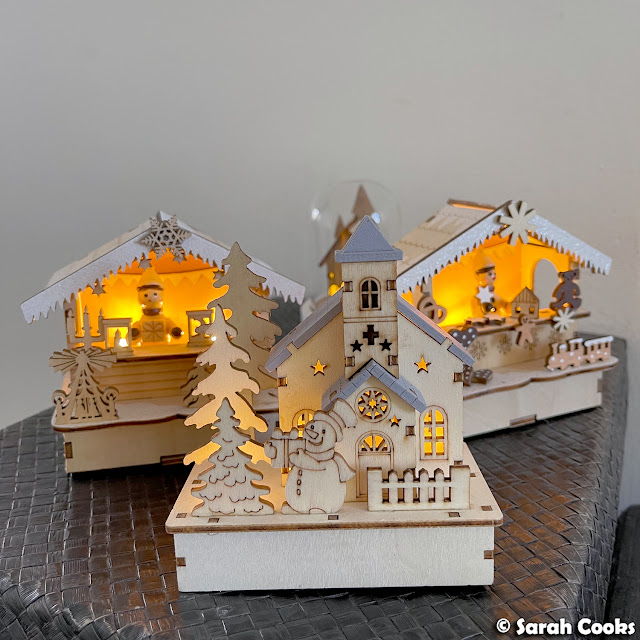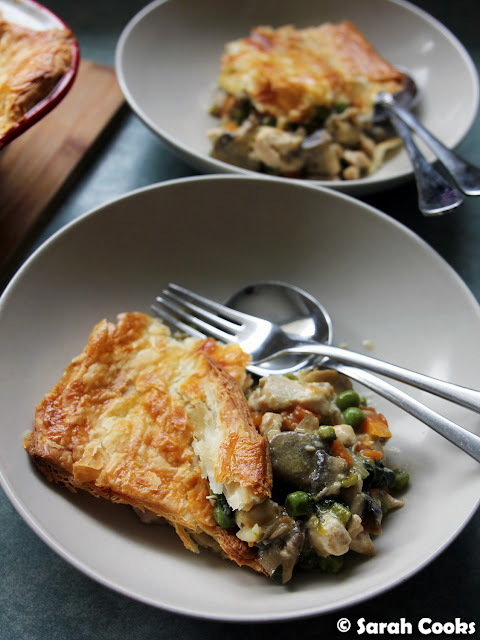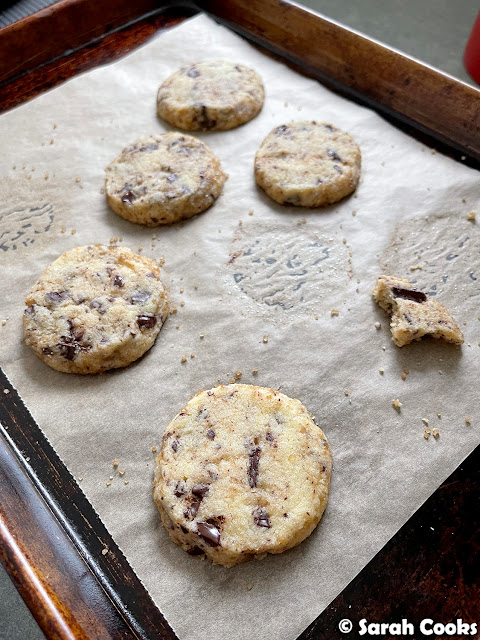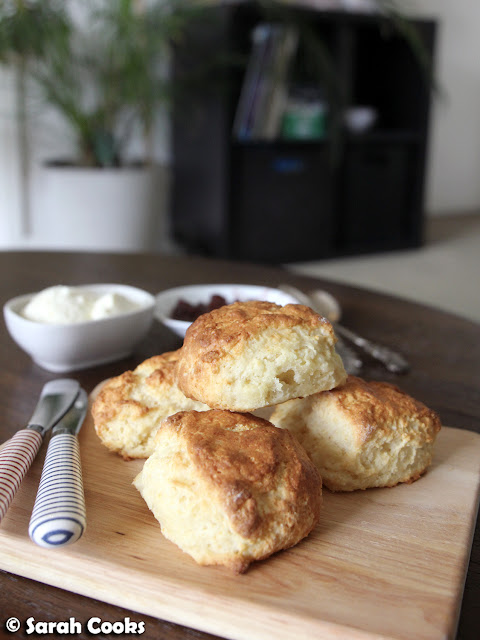Those of you who follow my Twitter will know that I spent the greater part of my Saturday evening making puff pastry. I had a few spare hours, and quite a bit of that French butter that needed using. The aim, by the end of the evening, was to have a batch of delicate butterfly-shaped palmiers to snack on, plus a few patons of pastry to keep in the freezer. Things didn't quite eventuate that way, but the evening wasn't a total loss. Let me explain.
Disclaimer: What follows is merely a summary of the steps I took when I had a go making puff pastry - definitely not an instruction guide! Here and here are the most useful online guides that I found.
I followed the Roux Brothers' recipe for puff pastry, which is quite similar to their croissant recipe, except that the dough is not yeasted. Again, like croissants, the process is long and fiddly - you will probably want to give up more than once. Due to all the waiting and resting times, I recommend having a mindless DVD to watch in between - Blades of Glory for us.


Once the dough has rested for 2-3 hours, you commence the rolling and turning process. Unlike most recipes I've seen, where you make a beurre manié (mixture of flour and butter) to roll between the layers of dough, the Roux brothers just ask you to put a block of cold butter in the middle of the dough, wrap it up and start rolling. (Although they do ask you to whack the butter with a rolling pin a few times, to make it "supple" - great after work stress reliever!)
 The pastry needs 6 turns in total before it is ready to use, but for some reason, once you've done the last 2 turns it needs to be used within 3 days. If you plan on storing it, you only do 4 turns, and complete the final 2 turns just before you use the pastry. With this in mind, I took about an eighth (1/8) of the pastry to make palmiers, and did the final 2 turns. I then let it rest in the freezer for the specified time (10 minutes), and tried to roll and shape it.
The pastry needs 6 turns in total before it is ready to use, but for some reason, once you've done the last 2 turns it needs to be used within 3 days. If you plan on storing it, you only do 4 turns, and complete the final 2 turns just before you use the pastry. With this in mind, I took about an eighth (1/8) of the pastry to make palmiers, and did the final 2 turns. I then let it rest in the freezer for the specified time (10 minutes), and tried to roll and shape it.

Yup, I failed. The dough was super-sticky and kept breaking. Argh! I tried persevering and rolling it back together, but this also failed. In frustration, I shunted the dough back in the fridge and did some serious Googling. This is where the second article I linked really came in handy - unlike certain fancy shiny French books *ahem* - it has a troubleshooting guide.
There was no point mooshing the dough back together, because once the integrity of the layers is compromised, the dough is stuffed. I learned that throughout the whole pastry-making process, it is important to keep the dough cold to prevent the butter melting and oozing out. You also need to keep the worksurface clean, scraping away the flour and dough after every single turn, so that the dough doesn't stick and tear. Oops. So, the main problems were that I didn't let the dough rest long enough after the 6th turn - had no probs up until then - and that I didn't keep scraping the board completely clean of flour/dough, so it kept getting stickier.
Just for curiosity, I baked a couple of scraps of the messed-up dough to see how they'd turn out...

I just couldn't let those burnt lumpy pieces of dough be the rewards for a whole evening of rolling and bashing and turning. I scrupulously scraped and cleaned the bench, and got another small piece of pastry from the batch, carefully did the last 2 turns on it, and let it chill for a good 30 minutes before rolling it gently into a square. Like Mary J Blige says, no more dramas. Phew!
Following Nigel Slater's recipe from Appetite, I traced a 1-cm border around the square, pricked the centre with a fork, and layered thin slices of apple on top. A brush of melted butter, a sprinkle of sugar and 15 minutes in a super-hot oven and...
Ta-dah! A real pie! A tarte aux pommes, if you will. I cannot tell you how pleased I was with this. The pastry even puffed up on the sides like it was supposed to. What a fab little late-night snack! (To share with my family, of course). I was so relieved that the majority of the pastry was still ok, and that I hadn't wasted all that time and butter. I have carefully divided and wrapped up the remaining dough, labelled it and put it in the freezer. I now have 6 patons of puff pastry, and quite a few ideas on how to use them! (Including, yes, another attempt at palmiers).
















4 comments
Oh gosh! When Duncan told me some time ago that even he doesn't bother making puff pastry, I put the thought of attempting it right out of my mind. :-)
ReplyDeleteGood on you for giving it a go - I'm glad at least some of it turned out well!
I'm amazed that you tried to make your own puff pastry. But even more respect to you for taking another turn when things didn't work out, and you made those pastries instead.
ReplyDeleteI'm amazed that you tried to make puff pastry. But even more respect to you for changing directions when things didn't work out and making a pate feuilletee instead.
ReplyDeleteHey I just saw you are linking my puff pastry blog post! I'm honored and pleased to see it helped at least one person, so it was not a waste to write after all ;)
ReplyDeleteThis is giving me back some motivations to actually write the post about the french croissants. I'll let you know when it's written if you are interested.
In the meantime you can see a picture of the result here: http://www.qualifilms.com/gallery/ChoJin2006CookingCroissants4/IMG_4464
Take care,
ChoJin